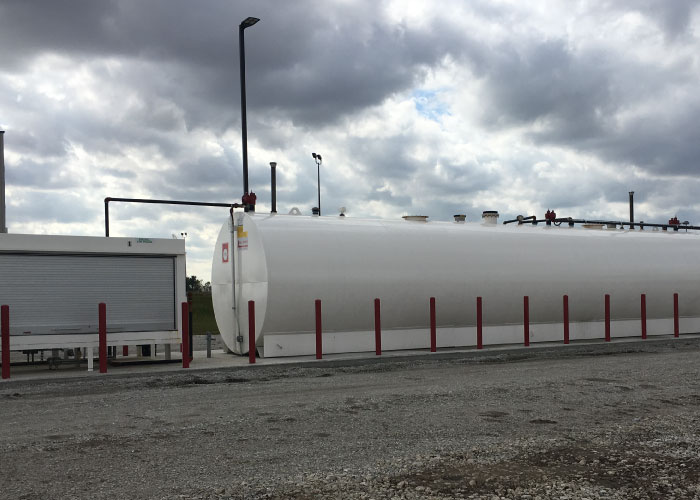
What Do AST Owners Need To Know About Integrity Testing?
Most everyone is aware of the routine visual inspections required by the SPCC Rule; however, owners and operators of fuel and oil tanks subject to SPCC Regulations (Code of Federal Regulation (CFR) Title 40 Chapter 112) are also required to comply with integrity testing requirements as stipulated in these regulations. Chapter 112.7(d) states:
“…for bulk storage containers, conduct both periodic integrity testing of the containers and periodic integrity and leak testing of the valves and piping…”
Integrity testing is further elaborated upon in Chapter 112.8(c)(6) concerning onshore facilities (excluding production facilities), which states:
“Test or inspect each aboveground container for integrity on a regular schedule and whenever you make material repairs. You must determine, in accordance with industry standards, the appropriate qualifications for personnel performing tests and inspections, the frequency and type of testing and inspections, which take into account container size, configuration, and design (such as containers that are: shop-built, field-erected, skid-mounted, elevated, equipped with a liner, double-walled, or partially buried). Examples of these integrity tests include, but are not limited to: visual inspection, hydrostatic testing, radiographic testing, ultrasonic testing, acoustic emissions testing, or other systems of non-destructive testing. You must keep comparison records and you must also inspect the container’s supports and foundations…”
This rule addresses both visual inspections and various non-destructive testing methods as acceptable means of integrity testing. Although this regulation does not point to a specific industry standard that you must follow, there are two commonly accepted and referenced standards depending on the tank size and construction method.
- STI SP001 – ASTs under 75,000 gallons, shop built tanks
- API 653 – ASTs over 75,000, field erected tanks
Concerning STI SP001 for shop-built tanks under 75,000 gallons, the frequency and type of inspection and/or integrity testing(s) required is dictated largely by the size of the tank and the presence of spill control and continuous release detection methods present. Spill control is defined as a means of preventing a release of liquids to the environment, adjoining properties, and waterways. This generally constitutes a means of secondary spill containment and/or overfill protection. Continuous release detection method (CRDM) is defined as a means of detecting or observing a release of liquid through an inherent design. CRDM includes elevating ASTs, installing an impermeable release prevention barrier under the AST, or simply providing an impermeable secondary containment method where leaks/spills would accumulate. Based on the presence or absence of these controls, ASTs are classified as one of the following categories:
- Category 1 – ASTs with spill control and CRDM
- Category 2 – ASTs with spill control, and without CRDM
- Category 3 – ASTs without spill control (*Category 3 ASTs generally do not meet SPCC requirements)
Each SPCC Plan must contain a schedule of integrity testing for ASTs based on an industry standard. The professional engineer certifying the SPCC Plan will determine the category of tanks present at the site and the schedule of testing(s) that are needed based on the applicable industry standard.
Providing spill protection for smaller tanks can remove the need to perform periodic integrity testing by certified inspectors. Category 1 ASTs that are 5,000 gallons or less and Category 2 ASTs that are 1,100 gallons or less do not require certified integrity testing or inspections, only continued visual inspections by the plan holder or designee. For larger and higher category ASTs, an industry certified tank inspector and qualified non-destructive test operator will generally be needed to perform internal and/or external integrity testing on a periodic basis.
The Environmental Protection Agency has also determined in a response letter to the Petroleum Marketers Association of America that ASTS do not require a form of certified non-destructive integrity testing so long as visual inspections are performed and the following “equivalent environmental protections “are true and present:
- AST is well-designed and shop built;
- AST has a capacity of 30,000 gallons or less;
- AST has spill control; and
- AST is elevated or has CRDM.
Evora is proud to provide a variety of AST services: from inspection and testing requirement consulting to AST service, maintenance, and installation – connect with our team to discuss your needs today.
